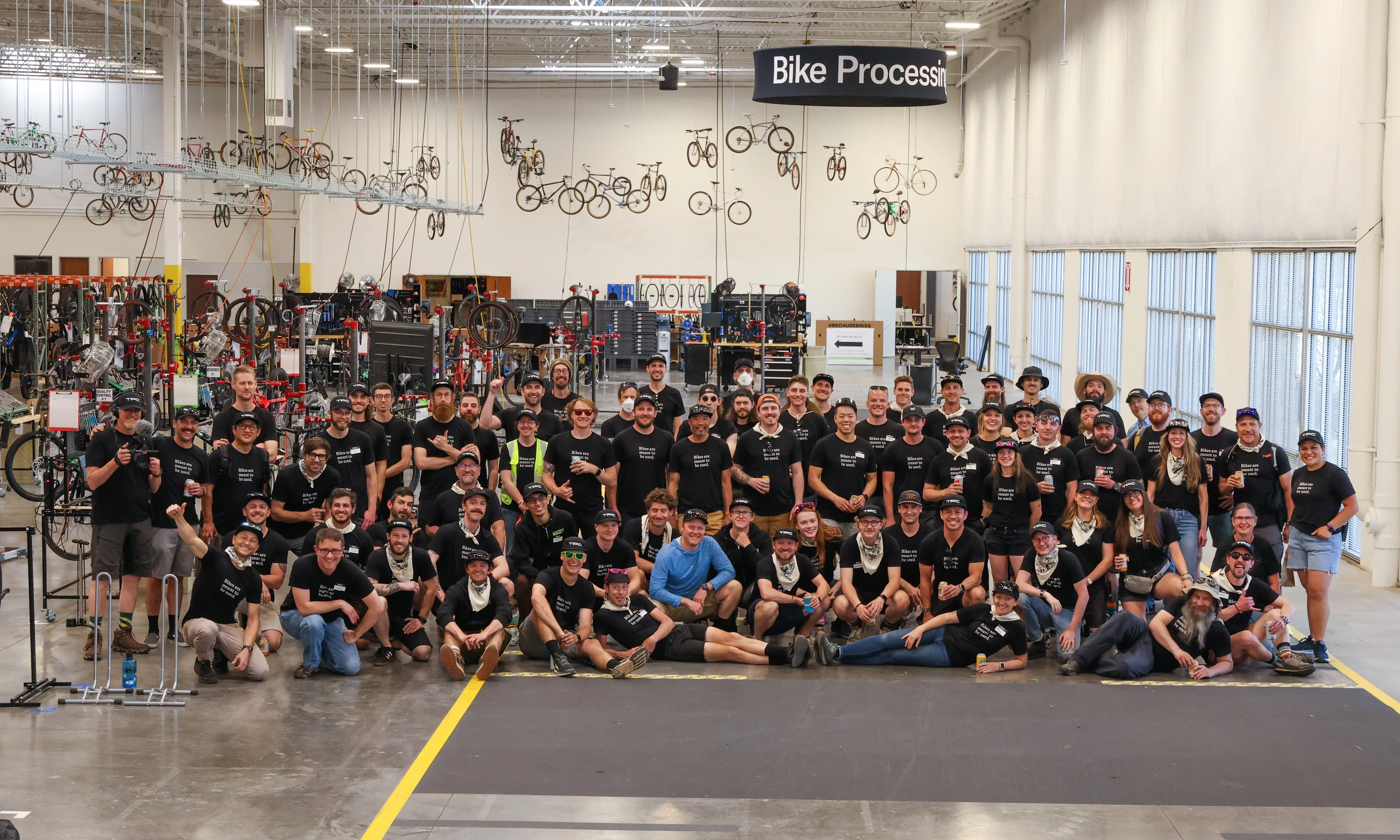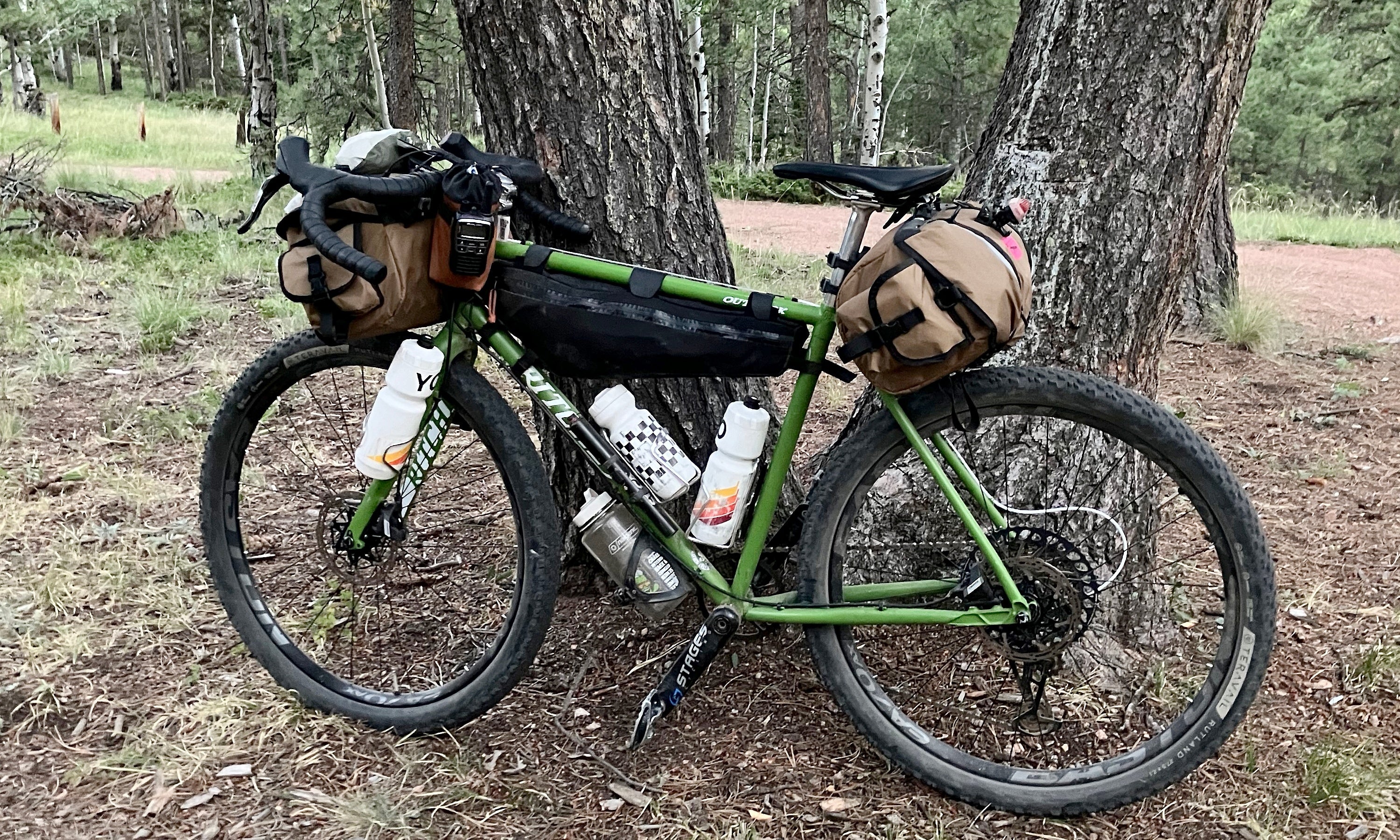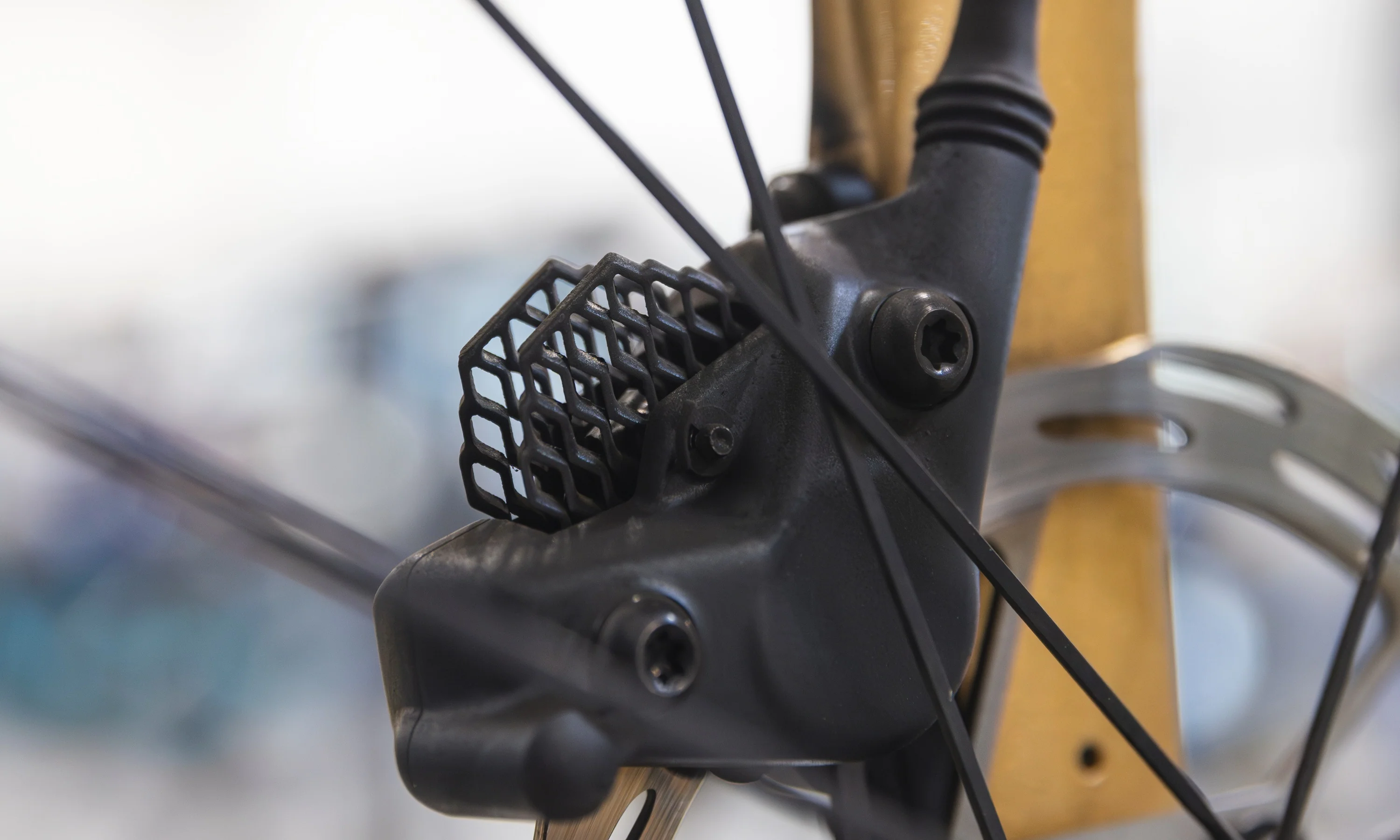The robotic “bzzzt” of an electronic derailleur will instantly make any bike feel like it's from the future. In the age of smartphones, it is fitting that bikes made from space-age materials also have electronic shifting. But there are still plenty of mechanical-shifting holdouts in the cycling world. I used to be one of them. But after testing several bike equipped with Shimano Di2 and SRAM AXS, I was convinced to finally make the leap.
To dig deeper into why modern electronic shifting feels so good, I called up Nick Legan, Road Brand Manager for Shimano North America, and JP McCarthy, SRAM Road Product Manager. Despite representing rival brands, they actually agree on a lot and both have strong opinions on why going electronic is worth it. They took the time to explain the benefits of Di2 and eTap AXS groups and gave advice on how to decide if an electronic drivetrain is right for you.
[button]Shop Bikes With Electronic Shifting[/button]
Contents
- Electronic Shifting: Pros and Cons
- What Is electronic shifting?
- Performance Benefits
- Reliability and Maintenance
- Cost
- Batteries and Charging
- Shimano Di2 vs. SRAM AXS
- Is the Future All Electronic?
- Is Electronic Shifting for You?
- Final Thoughts
Electronic Shifting: Pros and Cons
|
Electronic Shifting Pros |
Electronic Shifting Cons |
|
Shifting feels effortless |
Batteries could die while riding |
|
More consistent shifts |
More devices to charge |
|
Customizable controls |
Higher cost |
|
Can record shift data |
Doesn’t make you faster |
|
More weatherproof |
|
|
Easy to tune and install (mostly) |
What Is Electronic Shifting
Over the last 10 years, electronic shifting has become more mainstream. Shimano's Dura-Ace Di2, the first commercially viable electronic drivetrain, came out in 2009 and ignited the electronic revolution. It wired the front and rear derailleur to the shifters and a battery. Electronic signals from the shifters actuated the servo motors in the derailleurs. It was miraculous.
SRAM followed Shimano with Red eTap in 2015 and set itself apart by going fully wireless. You still had two derailleurs, front and rear, but the shifters actuated them wirelessly using a proprietary frequency SRAM created. Each derailleur had its own battery, and the shifters had small 2032 coin batteries.
Since then, Camapagnolo has also offered a wired electronic drivetrain in its EPS line. Shimano has also upgraded its higher-end DI2 offerings with a semi-wireless design.
In every case, you need at least one derailleur, shifters, and a battery to shift your chain.
[newsletter]
Performance benefits of electronic shifting
You will hit the gear you want every time, perfectly. It does give you a competitive edge.
Beyond riding, many of us love cycling for the tech behind it. Technology is always exciting because it promises better performance or a better ride experience. As both a bike nerd and a competitor, the better a bike performs, the happier I am. But I am also skeptical of how much noticeable difference any new product will make in my riding.
Do top-of-the-line electronic groups really work that much better than their mechanical counterparts?
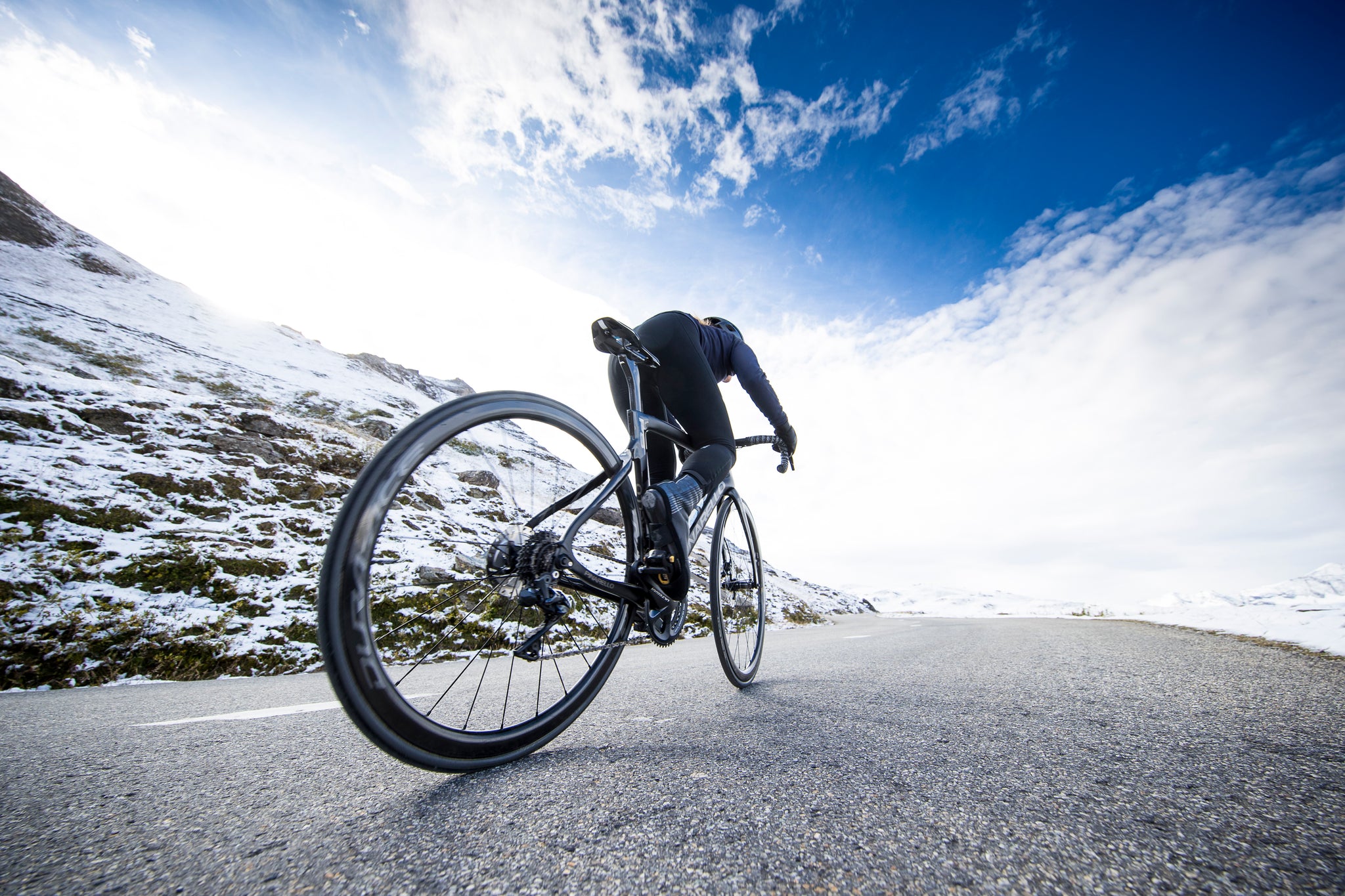 Shimano Ultegra Di2. Photo: Shimano
Shimano Ultegra Di2. Photo: Shimano
“The basis of good shifting often has more to do with the chainrings, cassette, and chain, than being actuated mechanically (via cable) or electronically,” says Nick Legan of Shimano. “Shifting performance can only be as good as the ramps and pins and chain on the drivetrain allow.”
Over the course of decades, mechanical drivetrains have become incredibly refined. High-end mechanical groups like Shimano Ultegra and Dura-Ace and SRAM Force and Red will all shift extremely well if tuned properly. In this sense, they are still comparable to electronic groups. But both representatives I spoke to explain that electronic motors are the next step forward.
Ease of shifting
The main difference most riders notice when switching to electronic shifting is how easy it is to actuate a shift. Mechanical drivetrains require the rider to use force to move a shifter paddle and pull a cable to actuate a shift. Electronic groups use small derailleur motors that do the work for you and instantly shift at the push of a button. Current models can also customize shift settings so that multiple shifts can be actuated by one click, allowing you to find the correct gear quicker, with less movement and energy.
“The biggest advantage is just how easy it is to shift,” says JP McCarthy of SRAM. “It doesn't sound like much effort to throw a lever, but one of my first impressions, and the first impression I hear from a lot of my peers, is that it feels like cheating. It really is that much easier to shift.”
It may sound like a small thing, but cycling is a sport obsessed with marginal gains. Bikes are so good now that performance gains have to be squeezed out of the tiniest details. By making the act of shifting just a bit less physically or mentally demanding, an electronic drivetrain can allow riders to dedicate more focus and energy to other tasks.
“It makes it easier to put attention toward things like producing power, handling your bike through corners, or just enjoying your surroundings,” explains McCarthy. “It takes decisions away, minimizing the brainwaves that have to go to your shifting.”
 Top pros like Tadej Pogacar and Jonas Vingegaard use electronic shifting because it frees up valuable brain space when riding on the limit. Photo: A.S.O./Pauline Ballet
Top pros like Tadej Pogacar and Jonas Vingegaard use electronic shifting because it frees up valuable brain space when riding on the limit. Photo: A.S.O./Pauline Ballet
Any rider who has bungled a shift while riding at their limit will appreciate the ease of electronic shifting. Struggling to find the correct gear while your heart rate is red-lined on a climb or in a race can mean lost time on a Strava segment or getting dropped your riding partners or competitors.
“All riders will mis-shift at some point,” adds McCarthy. “I think that the test of a good system is the ability to compensate for an inadvertent shift or a shift in the wrong direction. That's where electronics really excel. It just takes a tap to get to the right gear. So that really is a big advantage.”
Shift consistency
Not only are electronic shifters easier to actuate, but electronic groups also produce more consistent shifts. I’ve ridden several mechanical drivetrains from both manufacturers. They have all worked well, but I’m always plagued by at least one gear that doesn’t behave as well as the rest. Small variables can change during a ride, such as cable tension, cable or housing contamination, hanger alignment, or filth on my drivetrain. Any of those conditions can lead to slow, harsh, or finicky shifting. When this happens, it drives me crazy. But with electronic drivetrains, it’s essentially a non-issue.
“The motors on the derailleurs actuate at the same rate every time,” says Legan. “That rate is paired to our chain, cassette, and chainrings. That timing is optimized with our electronic groups to shift perfectly for the shift ramp profiles. It’s a more consistent shift. You will hit the gear you want every time, perfectly. It does give you a competitive edge and most people who've ridden both will prefer Di2 because it's just a little more precise, and a little more accurate.”
Because electronic groups operate using wires or a wireless signal, shifting won’t ever be affected by friction in the cables or housing due to contamination, age, or acute bends in the cable routing path (more on that later).
“Where Di2 really shines is on triathlon or time trial bikes, or aero bikes with complicated internal routing,” says Legan who was previously a pro mechanic with Team Slipstream. “The cable routing on those bikes is notoriously difficult to deal with. In order to get it tucked away and really aerodynamic, it can be really difficult to get smooth mechanical shifting on those types of bikes.”
Shift customization
Both Di2 and AXS allow the use of small accessory shifters. Shimano refers to them as “sprint shifters” or “climbing switch shifters” and SRAM calls them “blips.” These small buttons allow you to place shifters in different locations on the handlebars like the drops and tops.
 SRAM AXS Blips on the handlebar tops for easy access when climbing. | Photo: SRAM
SRAM AXS Blips on the handlebar tops for easy access when climbing. | Photo: SRAM
“Let's say you're a sprinter,” explains Legan. “It’s already an advantage to have quick, reliable shifts, and then it’s another big advantage to have those accessory shift buttons too. You can shift with a button in the drops instead of reaching for the standard mechanical shift location. Climbers can shift while staying upright on the tops. For time trial or triathlon competitors, you can shift from the aerobars and from the base bar. Having multiple shift locations is for sure a competitive advantage.”
This relates back to McCarthy's point about making shifting easier to free up attention for other tasks. If you’re sprinting or climbing, you don’t have to move as much to find the next gear and can maintain the ideal position for performance.
To take this even further, electronic drivetrains also give riders the option to use Synchro (Shimano) or Sequential (SRAM) shifting. These shift modes remove the need for the rider to think about the front derailleur. The right shift paddle shifts to a harder gear and the left to an easier gear. The front derailleur shifts automatically at the right time for a seamless and simpler shifting experience, allowing you to focus on riding.
Riders looking for a bit more control can use Semi Synchro (Shimano) or Compensating (SRAM) modes which allow you to control the front derailleur but eliminate the need for rear compensation shifts after a front shift. The rear derailleur will move one or two cogs automatically so that you can maintain the proper cadence.
These small improvements can add up to a noticeable improvement in overall performance. But like McCarthy mentioned earlier, beyond performance, making things easier can also improve your ability to turn off your brain and enjoy the act of riding as well.
Data
GPS head units, heart rate monitors, and power meters have become a regular part of the cycling experience. Data is essential for riders trying to maximize their performance or those who enjoy the nerdy, quantifiable side of the sport. Another small advantage is that electronic drivetrains allow you to gather even more data about your riding. 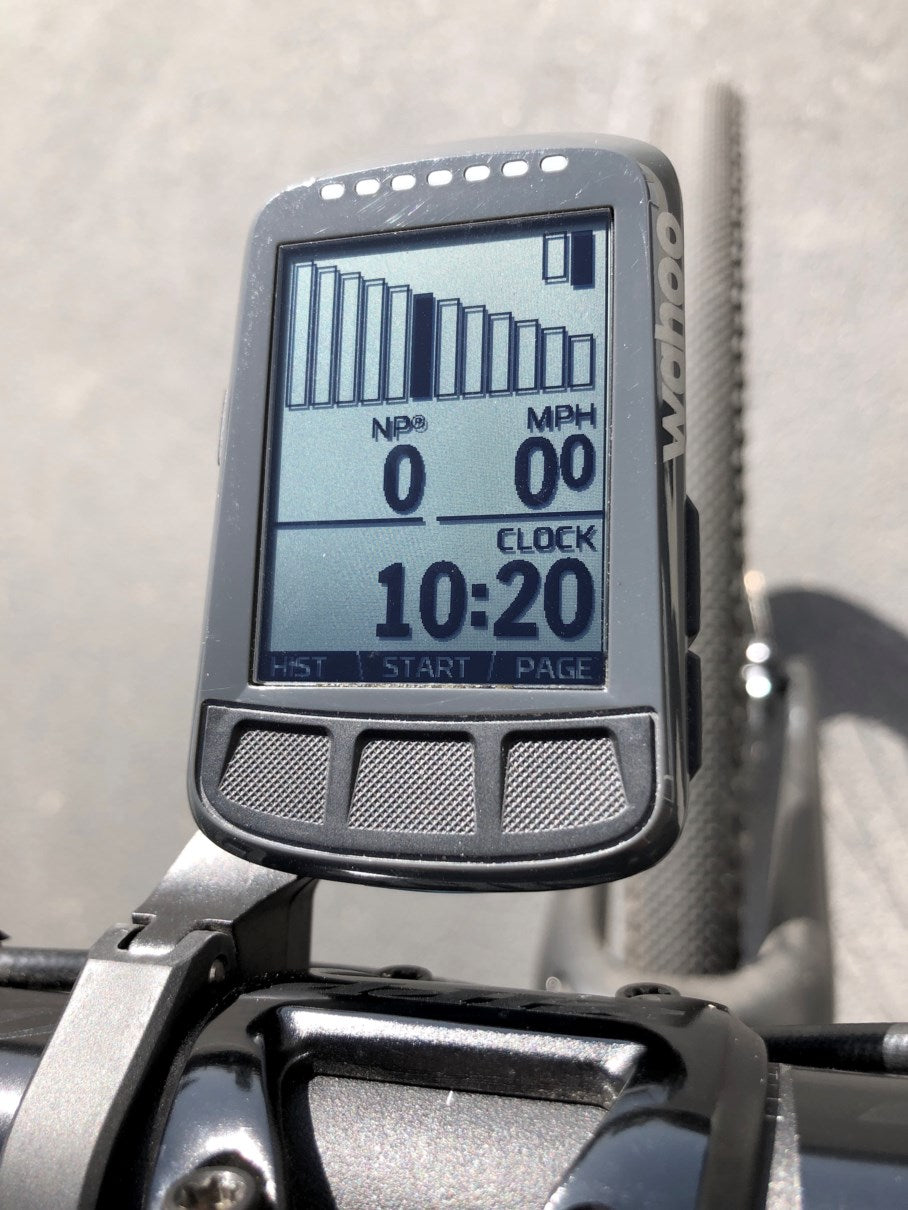 Electronic groups like SRAM AXS can pair with your head unit and show you what gear you're in. | Photo: SRAM
Electronic groups like SRAM AXS can pair with your head unit and show you what gear you're in. | Photo: SRAM
“You can get a lot of information about your ride. Beyond distance, and speed, and power, but how your components are working,” says McCarthy. “eTap AXS uses BlueTooth and ANT+, and if it’s connected to a head unit, your drivetrain data will be saved to a FIT file that has your shift profile. You can use a free web-based app that allows you to see how much time you spend in each cog. This can help you understand what tooth counts are appropriate for your cassette, or what gearing you need for races, or how your fitness is changing.”
Di2 can also connect with many GPS devices to show gear selection, ratios, and battery life. You can also program buttons on your shifters to scroll through screens on a GPS.
Special use cases
Both Legan and McCarthy were excited to mention the opportunities electronic shifting has given para-athletes and riders with physical disabilities.
“It’s a place where electronic shifting really shines,” says Legan. “Shimano works with Wounded Warriors and other organizations and we help with custom bikes that help riders who experience mobility or dexterity issues. It’s really cool what you can accomplish with electronic shifting and accessory shifters.”
“Exactly,’ McCarthy says. “It's great if you have injuries, injured hands, anything that can make it hard to ride a bike, electronic shifting can help. It works the same if you have cold hands or big gloves too. If you don’t need dexterity because it’s so easy.”
Electronic shifting: Reliability and maintenance
As long as there's power in the battery, the shifting doesn't degrade.
Instinctively, I look at an electronic drivetrain and worry about it getting wet the same way I worry about my phone or laptop. But both Legan and McCarthy assure me that their electronic drivetrains aren’t fazed by a little water. In fact, electronic drivetrains are more robust than you may think.
 Don't fear water. Photo: Shimano/Kevin Fickling
Don't fear water. Photo: Shimano/Kevin Fickling
“If you're someone who finds themselves in dirty, dusty, or muddy conditions, an electronic setup is actually exceptionally weatherproof,” says Legan. “All the connections are waterproof. We don't encourage anyone to powerwash their bikes, but we’ve seen people powerwash Di2 bikes, and for the most part, we see very few issues. We don't encourage you to submerge a bike fully, that's not going to be great for the battery, but you shouldn't submerge any bike anyway.”
Legan and McCarthy both recommend electronic drivetrains in favor of mechanical when riding in the worst conditions.
“A great thing is that you don’t have to worry about water, grit, and mud affecting your shifters and derailleurs, and you no longer have to worry about contamination to the cables or housing,” says Legan. “As long as there's power in the battery, the shifting doesn't degrade.”
Water, dirt, mud, and other contaminants are the most common sources of poor shift performance on drivetrains that rely on cables and housing. Many riders neglect these components but ideally, cables and housing should be swapped out once or twice a year — maybe more depending on conditions — to maintain good shifting.
“Once a bike is set up, assuming no trauma occurs to wires or other parts, there's essentially no maintenance to do,” says Legan. “It's plug and play and kind of tough to mess up. You never have to worry about cables anymore and that's kind of fun.”
Your drivetrain still needs to be cleaned and your hangar still needs to be aligned. But when you take away the need for a cable replacement or adjustment, it means less service. That’s a good thing.
“If there is a shifting problem it makes it easier to identify the issue because you've taken away the one like the major things (cables and housing) that compromise your shift performance,” says McCarthy.
McCarthy makes another great point about how the shifters themselves are more reliable because shifts don't depend on any moving parts within the controls.
 Di2 and AXS can handle horrid conditions, like the sticky mud found at Unbound Gravel. With the power of a motor and no cables to gum up, they will keep on shifting.
Di2 and AXS can handle horrid conditions, like the sticky mud found at Unbound Gravel. With the power of a motor and no cables to gum up, they will keep on shifting.
"All mechanical linkages and shift linkages are subject to performance being compromised due to debris getting into the linkage,” explains McCarthy. “This doesn’t just happen with cables and housing, but debris can get into the ratchet mechanism of the shifter. This is a failure mode you used to see in the Classics with riders racing out in the wet for hours straight, getting covered with road silt. You’d lose ratchets which means you lose gears and then you lose the race. With electronics, this is a non-issue. It gives you consistent performance in the worst conditions.”
Cost
Unquestionably the advantage of a mechanical group is that it's cheaper.
So electronic groups are incredibly easy to shift, extremely consistent, reliable in the worst conditions, low maintenance, and provide tons of options to improve the riding experience. That’s all great. But it’s impossible to talk about electronic groups without mentioning cost.
It should come as no surprise that advanced electronic groups are more expensive than their mechanical equivalents. Looking strictly at retail prices (which vary), you can expect to spend in the range of $400-1,000 more for an electronic group on its own. Most electronic groups (with cranksets) retail in the $1,000-3,500 range depending on the spec level and the specific components you select. For some, that’s their budget for a complete bike.
“Unquestionably the advantage of a mechanical group is that it's cheaper,” says Legan. “You're always going to save a bit of money sticking with the mechanical group.”
The good news for budget-minded riders is that with the growing popularity of electronic drivetrains, there are plenty of used bikes on the market that equipped with electronic drivetrains at a more affordable price point. At the time of writing this, a quarter of the bikes for sale on our site come equipped with either a Shimano or SRAM electronic drivetrain.
One major factor riders have to consider, however, is the higher replacement cost of electronic components. For example, an Ultegra R8000 Di2 rear derailleur is over $100 more than a mechanical Ultegra derailleur. Electric motors are simply more expensive to produce. Higher-end models are worse. The halo-level SRAM Red AXS with its high-tech Orbit Damper can retail for over $700! If your chosen riding discipline or style is prone to crashes and bike damage (e.g. amateur crit racing or downhill mountain biking) then an expensive electronic drivetrain likely isn’t worth it.
“It’s not a good choice for the user who's really likely to tear derailers off the bike,” says McCarthy. “That type of rider is going to suffer a lot if they keep having to spend hundreds to replace derailleurs.”
If you’re sure you’ll take good care of your bike, it’s probably fine to splurge. But a piece of sound advice always worth reiterating is that you should only ride what you can afford to replace.
Batteries and charging
People have run out of batteries on a ride.
Remembering to charge a bike can be a novel experience for riders accustomed to mechanical drivetrains. Some riders are afraid of running out of battery power before or during a ride. Anyone who’s seen the Netflix documentary "Icarus" will remember how Bryan Fogel ran out of battery power during the target event the movie was built around. It’s a nightmare scenario.
“If you're looking for a disadvantage to an electronic group, you have to charge it and people have run out of batteries on a ride,” says Legan.
 Go as far as you dare. Your battery will last. Photo: Jordan Clark Haggard
Go as far as you dare. Your battery will last. Photo: Jordan Clark Haggard
But both Legan and McCarthy agree that the fear of losing charge during a ride is largely unfounded.
“Our battery life is exceptionally long and it's very easy to check that battery life using the indicators on the junction box,” says Legan. “Charging is very simple. You just plug it into the wall. And it's one of those funny things where, for some riders, the charging interval is so big that they can forget to charge. With Di2, I would say that the average cyclist that rides three-to-five times a week probably needs to charge their bike four times a year. It’s really hard to mess up, but if you mess up once, you’ll probably never do it again.”
“For AXS, when you actuate either derailleur, there are indicator lights on the batteries and shifters that light up and they are really clear,” adds McCarthy. “It goes green, red, then blinking red. If it's red, you have maybe 15 hours of life left. Then you should think about charging a battery when you get done with the ride that you're on. And then if it's flashing red, you have five or so hours of charge still, but probably want to charge it before the ride. I personally never get the flashing red because when I see it go red and I’ll just charge it right after the ride.”
 Checking SRAM AXS battery life. | Photo: SRAM
Checking SRAM AXS battery life. | Photo: SRAM
We live in a world full of chargers and are already very used to charging our phones, computer, and other devices. For most, adding a bike to the list, especially when it only needs occasional charging is a fairly small ask.
But let’s say you just aren’t good at paying attention. What do you do if your batteries start dying on a ride?
Shimano Di2 systems use a single large battery for the entire system. As it nears the end of its charge, it will cut off the front derailleur first.
“With the Di2 system, it shuts down the front derailleur first because it's the larger power draw,” says Legan. “Then you're stuck in whatever chainring you're in, but you still have 100-200 rear shifts to get home. But really, just check your battery level. It's a simple procedure!”
“There are four batteries in our eTap AXS system,” says McCarthy. “You've got coin cells in the shifters which last a really long time. We say they last at least a full year but they really exceed that by a wide, wide margin. In practice, people just don't change those things. But those batteries can die. So if you really, really, really want to be cautious you can carry an extra. They don’t weigh anything. It’s a CR2032 which is the most common one and you can get it nearly anywhere.
“We have two batteries, one in each derailleur,” explains McCarthy. “When one battery dies you can swap them. Generally, you use the live battery to put the front on the chainring you want and then use it on the rear derailleur to get home. With our system, you can also carry an extra battery. But we don’t encourage people to carry an extra because it's never really a problem as long as you pay attention to the state of your charge.”
An electronic bike with dead batteries also isn’t completely helpless.
“It's not like your bike is no longer a bike,” says Legan. “You can still pedal, you can still move forward. But depending on where you find yourself, you might need to call someone or you might not.”
Shimano Di2 vs. SRAM AXS
This article isn’t meant to be a head-to-head showdown, but with a representative from each of the two largest component manufacturers, I couldn’t help but ask for their thoughts on wired versus wireless electronic groups. Shimano’s Di2 systems use E-Tube wires to connect the battery, shifters, and derailleurs. SRAM’s AXS systems use a wireless signal to connect the shifters and derailleurs, and each component requires its own battery. Below are their explanations for why their respective brands designed their system with or without wires.
Shimano Di2 electronic shifting
 Shimano GRX Di2 | Photo: Shimano/Kevin Fickling
Shimano GRX Di2 | Photo: Shimano/Kevin Fickling
"A wired system is absolutely reliable,” says Legan. “But the biggest advantage if you're talking about a racing cyclist, or someone just interested in a premium experience, Di2 is a faster shifting system. The amount of time it takes for the shift to be performed from the time you push the button to the shift being complete is smaller.
“The other thing we have going for us is that it's one battery, instead of three or four batteries, it's one central battery, which I think is a real distinct advantage. As e-bikes continue to become popular, it also allows for some really cool integration so that you can have one central battery.
“I would also say that a wireless group is an advantage once — when you assemble the bike. And the number of consumers who actually assemble their own bikes is actually fairly small. Once a Di2 bike is assembled, it's pretty easy to live with. Even if you travel a lot. If you’re removing the rear derailleur, you're just unplugging the wire. It's not any slower or faster than pushing a button to sync the derailleur.
[button]Shop Shimano[/button]
SRAM eTap AXS electronic shifting
 SRAM Red eTap AXS | Photo: Chris Milliman
SRAM Red eTap AXS | Photo: Chris Milliman
“With eTap AXS, your shopping list is a lot shorter: controls, front derailleur, rear derailleur, and the power pack that comes with two batteries and the charger,” says McCarthy. “You bolt it to the bike, and it's so much easier than installing a mechanical drive train and much easier than installing a Di2 drivetrain. It takes five minutes, tops. We really value being wireless because it's so much simpler to assemble, repair, and replace.
“If you’re installing Di2, you often need somebody who’s experienced to do that, especially if your bike’s not set up for it. Routing wires and getting the battery into the frame can be a whole ordeal. In a lot of cases, older frames, cheaper frames, and many metal frames aren’t compatible. With eTap AXS this is a non-issue. You can put it on any bike, no special drilling needed.
“Plus, a bike just looks so much cleaner without all the extra cable! It’s a beautiful thing.
“In response to the slightly slower shift speed, yes, that's physically true when talking about wired versus wireless systems. But it’s a fraction of a second. It might be discernible to some people. If it is, I don’t think it affects your performance enough to matter. The mechanical portion of how the chain and cassette interface and the shift ramps make a bigger difference to shift speed than the difference that you get between wired and wireless.”
[button]Shop SRAM[/button]
Is the future all electronic?
The pros don't ride mechanical anymore.
With more and more bikes coming equipped with electronic groups, a major question I had is whether our representatives had any insight into the future of bike drivetrains. Will the day come when even entry-level bikes use electronic groups? Do buyers today need to buy electronics to stay relevant?
“Electronic shifting will continue to gain market share,” says Legan. “Shimano has been making Di2 for quite a long time. Now we have electronic shifting internal gear hubs, we have Steps integration, so electronic shifting is going to keep expanding into more areas of the market. But I don't think it'll fully replace mechanical shifting because it is still a fairly premium product. Driving the cost down to a point where the really entry-level bike would have electronic shifting is not that likely in the near future.”
“I don't think we’re going to enter a future where we're all electronic,” agrees McCarthy. “I think it's still cost-prohibitive to do so. But if it weren't, I don’t think there’s really a reason not to.”
At the premium level though, electronic groups are becoming the industry standard.
“We haven't pushed forward a new SRAM Red mechanical group at this point,” says McCarthy. “And we probably won't do another Red mechanical group in the future. We will still support Force mechanical for now. But the market is just too small at that very high end. We’re focusing on electronics there.”
 Tim Declercq riding Shimano Di2 on the cobbles. | Photo: Specialized
Tim Declercq riding Shimano Di2 on the cobbles. | Photo: Specialized
What’s abundantly clear is that at the highest levels of cycling, electronic groups have become the norm because of the advantages they offer.
“If you're looking for every little last performance advantage, electronic is the only way to go,” says Legan. “If you look at the professional road peloton, or you look at professional cyclocross racers, or even in the gravel scene, the vast majority of those riders are on electronic groups. That's because it is just a little bit faster, and a little consistent than a mechanical setup. At that level, it really matters.”
“The pros don't ride mechanical anymore,” says McCarthy. “I mean, I'm sure there are some exceptions, maybe prominent exceptions for certain days or certain types of riding, but in large part, they're not riding mechanical anymore. At some point, you won’t see mechanical bikes winning any major races anymore.”
[button]Shop bikes with electronic shifting[/button]
Is electronic shifting for you?
There's a good argument for saying that a bicycle should not have motors on it.
So we know that electronic shifting has a number of performance and reliability advantages. We know it’s expensive. And we know that electronic drivetrains are taking over the top-end of the sport. But how do you really know if it’s right for you?
“Of course, the average cyclist doesn’t need electronic shifting,” says Legan. “But boy it sure is fun. It's cool. The fascination some of us have with cycling is not just the experience of riding a bicycle outside, but it's also with the thing itself. The bicycle is really compelling and we're interested in the technology.”
“If you’re already considering electronics, I say it's probably in your best interest to go electronic because you’re going to be happier with it,” says McCarthy. “I used to be pretty reticent about it. All the bikes that I choose to ride to have electronics on them now.”
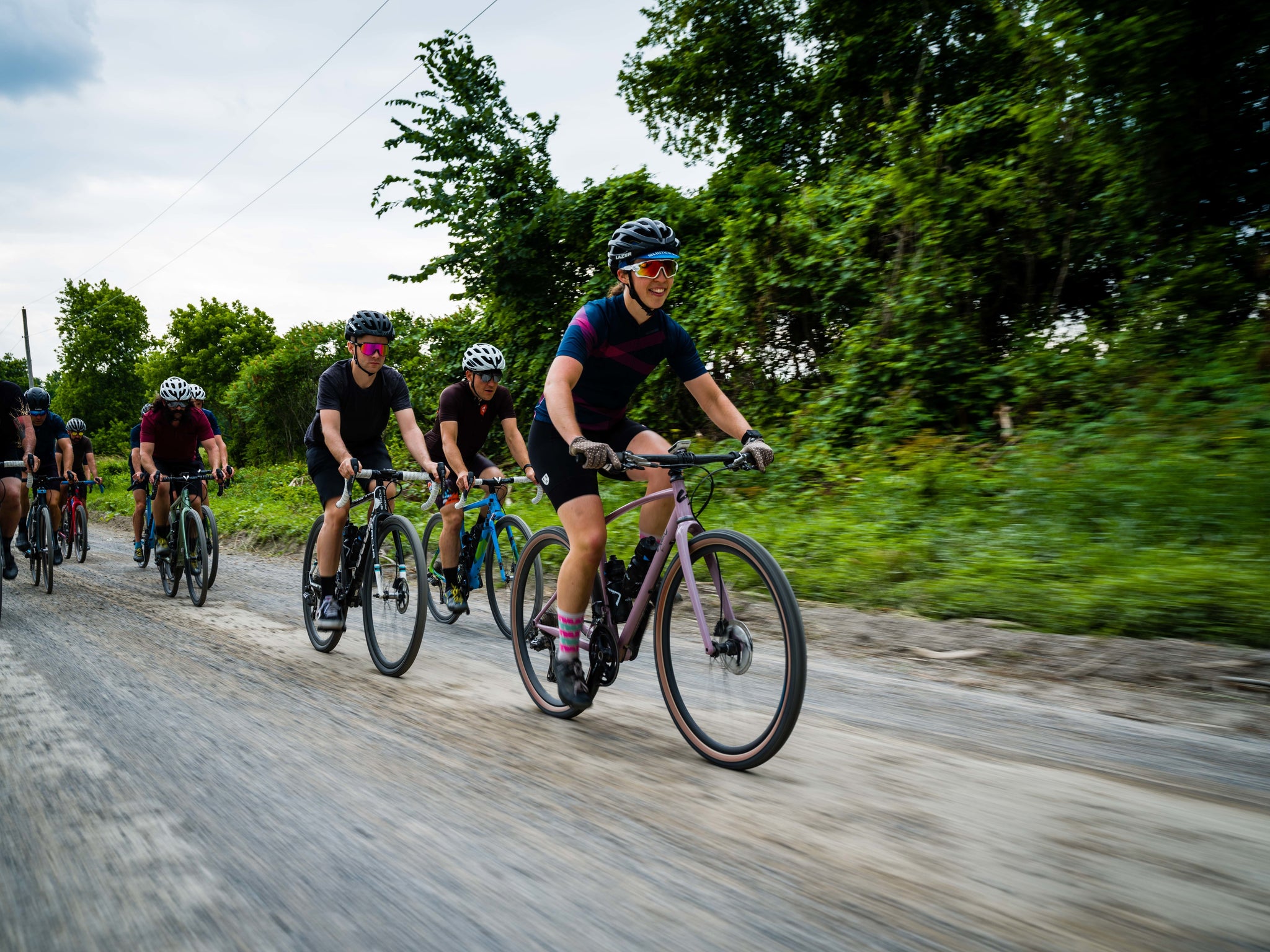 Having fun is not restricted by drivetrain choice. Photo: Shimano/Kevin Fickling
Having fun is not restricted by drivetrain choice. Photo: Shimano/Kevin Fickling
Despite encouraging the adoption of electronic shifting, both Legan and McCarthy acknowledge that adding electric motors to your bike does dilute some of the purity many of us love about bicycles.
“There's a good argument for saying that a bicycle should not have motors on it,” says McCarthy. “In a sense, yes, it’s cheating! Even if it’s just your fingers, you got a motor to take some of the work away. Some people don’t like that and it’s fine.”
“Some people love the tactile feel of mechanical as well,” Legan adds. “I think that for plenty of people, there's still an allure to mechanical bike because it's simple. It's straightforward. You know, we understand how it works. There's a beauty to that. Some people, when they go for bike rides they want to unplug, literally and figuratively. They want time away from a TV, and a computer monitor, and a phone, and beeps and alerts and all these things. There's nothing like a well-tuned mechanical group for that. It's silent. You're, just out in nature. And that's a really beautiful experience.”
Ultimately, it's not a requirement to have electronic shifting to enjoy riding your bike. It is an expensive product and in the end, the cost is likely the most important factor to base decision making around.
“I think that people should be buying bikes based on what their budget is and focusing on getting outside and riding their bike versus obsessing over specs,” says Legan. “It's fun to play with tech, but if you're a beginner rider and just want to get outside and ride a bike, I wouldn't be too focused on mechanical versus electronic.
“It comes down to money,” says McCarthy. “If you can afford it, do it. Even if you’re a beginner, don’t worry about it. I think the rider who would benefit most from the simplicity of eTap, i.e., taking four buttons and cutting that in half, is the novice. It just makes it easier and you're less likely to mis-shift. If you do mis-shift, the correction is so simple. For any amateur or even pro rider who has no oxygen left to power their brain during a ride, eTap is really good. You got to think about other things like watching the road, the wheels around you, and not about your shifting.
“But I will say, the quality and the feel of Force, Red, Ultegra, or Dura-Ace drivetrains is super-refined,” McCarthy adds. “It's 99% of what the pros are riding. But electronics are really a good thing to get the last bit of refinement that makes a bike perfect.”
[button]Shop bikes with electronic shifting[/button]
Final thoughts
Over the last few years, while testing bikes equipped with Di2 or eTap AXS, I always noticed the impressive ease of shifting. For me, the ability to effortlessly rapid-fire through gears with a push of a button is super valuable when riding on the rivet, battling my friends, or racing.

In general, I've also been happier because I never have to play with barrel adjusters or replace any cables and housing. I can shift under power and my bike doesn't protest. I can ride through heavy rain, snow, dust, and mud without any adverse effects. Building my latest bikes from the frame up with SRAM AXS was also shockingly easy. Yes, charging my derailleur batteries every few weeks is an extra chore, but I'm used to it now.  My latest gravel race rig uses a SRAM AXS Mullet setup.
My latest gravel race rig uses a SRAM AXS Mullet setup.
All of my current road and gravel bikes are now electronic, and I just made the leap on my mountain bike as well. I saved for months and sold many bikes to swap my entire quiver over to electronic shifting. At this point, I don't think I'm ever going back.
Do you use electronic shifting on your bike? Or do you prefer the simplicity and feel of old school mechanical shifting? Let us know in the comments!


